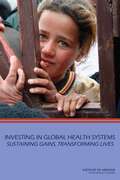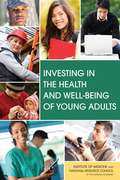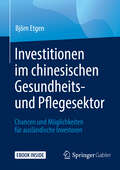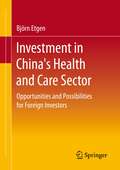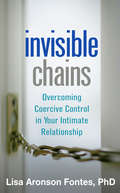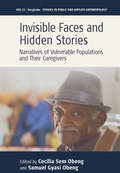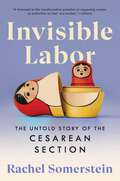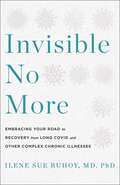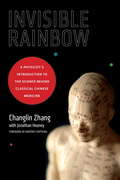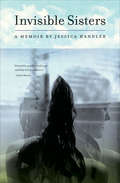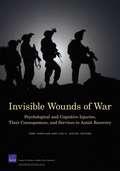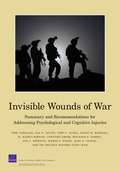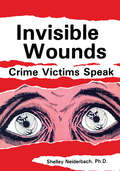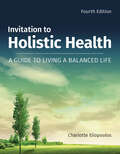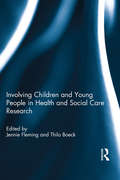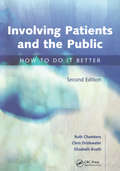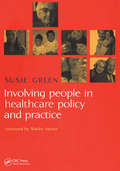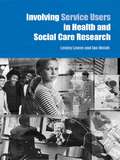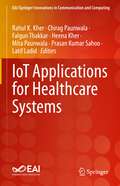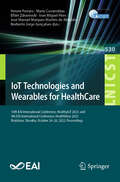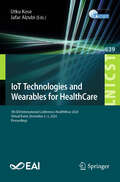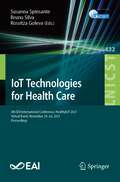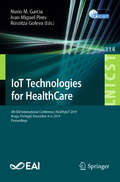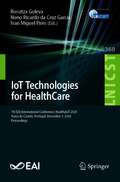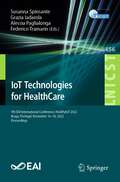- Table View
- List View
Investing in Global Health Systems: Sustaining Gains, Transforming Lives
by Gillian J. BuckleyThe United States has been a generous sponsor of global health programs for the past 25 years or more. This investment has contributed to meaningful changes, especially for women and children, who suffer the brunt of the world's disease and disability. Development experts have long debated the relative merits of vertical health programming, targeted to a specific service or patient group, and horizontal programming, supporting more comprehensive care. The U. S. government has invested heavily in vertical programs, most notably through the President's Emergency Plan for AIDS Relief (PEPFAR), its flagship initiative for HIV and AIDS. PEPFAR and programs like it have met with good success. Protecting these successes and continuing progress in the future depends on the judicious integration of vertical programs with local health systems. A strong health system is the best insurance developing countries can have against a disease burden that is shifting rapidly and in ways that history has not prepared us for. Reaching the poor with development assistance is an increasingly complicated task. The majority of the roughly 1 billion people living in dire poverty are in middle-income countries, where foreign assistance is not necessarily needed or welcome. Many of the rest live in fragile states, where political volatility and weak infrastructure make it difficult to use aid effectively. The poorest people in the world are also the sickest; they are most exposed to disease vectors and infection. Nevertheless, they are less likely to access health services. Improving their lot means removing the systemic barriers that keep the most vulnerable people from gaining such access. "Investing in Global Health Systems" discusses the past and future of global health. First, the report gives context by laying out broad trends in global health. Next, it discusses the timeliness of American investment in health systems abroad and explains how functional health systems support health, encourage prosperity, and advance global security. Lastly, it lays out, in broad terms, an effective donor strategy for health, suggesting directions for both the manner and substance of foreign aid given. The challenge of the future of aid programming is to sustain the successes of the past 25 years, while reducing dependence on foreign aid. "Investing in Global Health Systems" aims to help government decision makers assess the rapidly changing social and economic situation in developing countries and its implications for effective development assistance. This report explains how health systems improvements can lead to better health, reduce poverty, and make donor investment in health sustainable.
Investing in the Health and Well-Being of Young Adults
by Richard J. BonnieYoung adulthood - ages approximately 18 to 26 - is a critical period of development with long-lasting implications for a person's economic security, health and well-being. Young adults are key contributors to the nation's workforce and military services and, since many are parents, to the healthy development of the next generation. Although 'millennials' have received attention in the popular media in recent years, young adults are too rarely treated as a distinct population in policy, programs, and research. Instead, they are often grouped with adolescents or, more often, with all adults. Currently, the nation is experiencing economic restructuring, widening inequality, a rapidly rising ratio of older adults, and an increasingly diverse population. The possible transformative effects of these features make focus on young adults especially important. A systematic approach to understanding and responding to the unique circumstances and needs of today's young adults can help to pave the way to a more productive and equitable tomorrow for young adults in particular and our society at large. "Investing in The Health and Well-Being of Young Adults "describes what is meant by the term young adulthood, who young adults are, what they are doing, and what they need. This study recommends actions that nonprofit programs and federal, state, and local agencies can take to help young adults make a successful transition from adolescence to adulthood. According to this report, young adults should be considered as a separate group from adolescents and older adults. "Investing in The Health and Well-Being of Young Adults" makes the case that increased efforts to improve high school and college graduate rates and education and workforce development systems that are more closely tied to high-demand economic sectors will help this age group achieve greater opportunity and success. The report also discusses the health status of young adults and makes recommendations to develop evidence-based practices for young adults for medical and behavioral health, including preventions. What happens during the young adult years has profound implications for the rest of the life course, and the stability and progress of society at large depends on how any cohort of young adults fares as a whole. "Investing in The Health and Well-Being of Young Adults" will provide a roadmap to improving outcomes for this age group as they transition from adolescence to adulthood.
Investitionen im chinesischen Gesundheits- und Pflegesektor: Chancen und Möglichkeiten für ausländische Investoren
by Björn EtgenDieses Fachbuch vermittelt erfolgversprechende Strategien für Investitionen in das zukunftsträchtige Gesundheits- und Pflegewesen der Volksrepublik China. Der chinesische Gesundheitssektor wächst stetig und die chinesische Regierung hat erkannt, dass die Beteiligung ausländischer Investoren zur Verbesserung und Weiterentwicklung des chinesischen Gesundheitswesens, insbesondere in Ballungsgebieten, unabdingbar ist. Dies eröffnet Chancen und Möglichkeiten für ausländische Gesundheitsdienstleister, deren Investitionen in zunehmendem Maße von der chinesischen Regierung begrüßt und unterstützt werden. Das Buch stellt Möglichkeiten vor, um ebenso sichere wie gewinnbringende Investitionen im chinesischen Gesundheitsmarkt zu tätigen: von der Errichtung neuer Krankenhäuser und Pflegeheime über die Einführung des erforderlichen medizinischen Equipments bis hin zur Akquise und Einstellung qualifizierter Mitarbeiter. Hierbei werden insbesondere die rechtlichen Rahmenbedingungen beleuchtet.
Investment in China's Health and Care Sector: Opportunities and Possibilities for Foreign Investors
by Björn EtgenThis reference book provides promising strategies for investing in the promising healthcare and nursing sector of the People's Republic of China. The Chinese healthcare sector is growing steadily, and the Chinese government has recognized that the participation of foreign investors is essential to improve and develop the Chinese healthcare system, especially in metropolitan areas. This opens up opportunities and possibilities for foreign healthcare providers, whose investments are increasingly welcomed and supported by the Chinese government. The book presents ways to make safe and profitable investments in the Chinese healthcare market: from the construction of new hospitals and nursing homes to the introduction of the necessary medical equipment and the acquisition and recruitment of qualified staff. In particular, the legal framework conditions are highlighted.This book is a translation of the original German 1st edition Investitionen im chinesischen Gesundheits- und Pflegesektor by Björn Etgen, published by Springer Fachmedien Wiesbaden GmbH, part of Springer Nature in 2019. The translation was done with the help of artificial intelligence (machine translation by the service DeepL.com). A subsequent human revision was done primarily in terms of content, so that the book will read stylistically differently from a conventional translation. Springer Nature works continuously to further the development of tools for the production of books and on the related technologies to support the authors.
Invisible Chains: Overcoming Coercive Control in Your Intimate Relationship
by Lisa Aronson FontesWhen a man showers all of his attention on a woman, it can feel incredibly romantic, and can blind her to hints of problems ahead. But what happens when that attentiveness becomes domination? In some relationships, the desire to control leads to jealousy, threats, micromanaging--even physical violence. If you or someone you care about are trapped in a web of coercive control, this book provides answers, hope, and a way out. Lisa Aronson Fontes draws on both professional expertise and personal experience to help you:*Recognize controlling behaviors of all kinds.*Understand why this destructive pattern occurs.*Determine whether you are in danger and if your partner can change.*Protect yourself and your kids.*Find the support and resources you need.*Take action to improve or end your relationship.*Regain your freedom and independence.
Invisible Faces and Hidden Stories: Narratives of Vulnerable Populations and Their Caregivers (Studies in Public and Applied Anthropology #12)
by Cecilia Sem Obeng and Samuel Gyasi ObengDealing with narratives of vulnerable populations, this book looks at how they deal with dimensions of their social life, especially in regard to health. It reflects the socio-political ecologies like public hostility and stereotyping, neglect of their unique health needs, their courage to overcome adversity, and the love of family and healthcare providers in mitigating their problems. The narratives inform us about the dissimilarity between the way we speak, what we hear and how we act. American society likes to give the impression that it is listening to the plight of vulnerable populations, but the stories in this volume prove otherwise.
Invisible Labor: The Untold Story of the Cesarean Section
by Rachel SomersteinAn incisive yet personal look at the science and history of the most common surgery performed in America—the cesarean section—and an exposé on the disturbing state of maternal medical careWhen Rachel Somerstein had an unplanned C-section with her first child, the experience was anything but “routine.” A series of errors by her clinicians led to a real-life nightmare: surgery without anesthesia. The ensuing mental and physical complications left her traumatized and searching for answers about how things could have gone so wrong.In the United States, one in three babies is born via C-section, a rate that has grown exponentially over the past fifty years. And while in most cases the procedure is safe, it is not without significant, sometimes life-changing consequences, many of which affect people of color disproportionately. With C-sections all but invisible in popular culture and pregnancy guides, new mothers are often left to navigate these obstacles on their own.Somerstein weaves personal narrative and investigative journalism with medical, social, and cultural history to reveal the operation’s surprising evolution, from its early practice on enslaved women to its excessive promotion by modern medical practitioners. She uncovers the current-day failures of the medical system, showing how pregnant women's agency is regularly disregarded by providers who, motivated by fear of litigation or a hospital’s commitment to efficiency, make far-reaching and deeply personal decisions on behalf of their patients. She also examines what prevailing maternal and medical attitudes toward C-sections tell us about American culture.Invisible Labor lifts the veil on C-sections so that people can make choices about pregnancy and surgical birth with greater knowledge of the risks, benefits, and alternatives, with information on topics including:VBAC (vaginal birth after cesarean) and repeat c-sectionPain and pain management during childbirthHow C-sections can affect family planningThe valuable role of midwives and doulas in the birth experienceThe myths behind “natural” childbirth How limitations put on reproductive rights impact pregnant peopleWith deep feeling and authority, Somerstein offers support to others who have had difficult or traumatic birth experiences, as well as hope for new forms of reproductive justice.
Invisible No More: Embracing Your Road to Recovery from Long Covid and Other Complex Chronic Illnesses
by Ilene Sue RuhoyFrom a neurologist who diagnosed her own brain tumor, Invisible No More empowers patients with chronic and complex illnesses to take their health into their own hands. While Covid-19 has brought increased attention to chronic and complex illnesses, these conditions have impacted millions worldwide, long before the pandemic. Covid was not the first exposure to cause long-term disease and disability, nor will it be the last.In Invisible No More, Dr. Ilene Sue Ruhoy aims to empower the long-term patients of chronic and complex diseases, delving into her own harrowing experience as a patient. She details her evolution as a neurologist, toxicologist, and integrative physician to work with people across the globe in treating their chronic symptoms and disabling disease, all while amplifying their own voices. This book serves as a practical guide with sections on nutrition, breathing, supplements and more. With a focus on healing and empowerment, Invisible No More will answer patients' most pressing questions and take their health into their own hands.
Invisible Rainbow: A Physicist's Introduction to the Science behind Classical Chinese Medicine
by Hartmut Kapteina Changlin Zhang Jonathan HeaneyChanglin Zhang provides a scientific basis for the success behind alternative therapies such as acupuncture, qigong, Ayurveda, and other traditional therapies in an illuminating discussion that explains the efficacy of these approaches in treating a number of chronic conditions. Underlining how public perception of acupuncture has shifted over the last few decades from one of skepticism to one of acceptance, he explores the progression of acupuncture research from its unsuccessful beginnings to the ultimate discovery of a scientific basis for therapies centered on the subtle coherence patterns of interacting electromagnetic waves and fields. He explains the dissipative structure of electromagnetic waves that constitutes our electromagnetic body and describes how changes in our mood, lifestyle, and environment affect it. Invisible Rainbow explains these developments within the context of science's parallel development from its nineteenth-century focus on materialism, reductionism, and closed systems to its realization of the mass-energy equivalence, electromagnetic field, and its study of open complex systems. Discussing differences in Eastern and Western thought traditions and how they influence their respective medical systems, it also elucidates acupuncture's meridian system and Ayurveda's chakras and auras.From the Trade Paperback edition.
Invisible Sisters: A Memoir
by Jessica HandlerThe acclaimed author of The Magnetic Girl delivers &“an elegy for her dead sisters . . . a heartfelt, painful family saga, skillfully told by a survivor&” (Kirkus Reviews). When Jessica Handler was eight years old, her younger sister Susie was diagnosed with leukemia. To any family, the diagnosis would have been upending, but to the Handlers, whose youngest daughter, Sarah, had been born with a rare, fatal blood disorder, it was an unimaginable verdict. Struck by the unlikelihood of siblings sick with diametrically opposed illnesses, the medical community labeled the Handlers&’ situation a bizarre coincidence. By the time she was nine years old, Jessica had begun to introduce herself as the &“well sibling.&” Deeply moving and exquisitely written, Invisible Sisters is an extraordinary story of coming of age as the odd one out—as the daughter of progressive Jewish parents who moved to the South to participate in the civil rights movement of the 1960s, as the healthy sister among sick, and eventually, as the only sister left standing. In a book that is as hard to forget as it is to put down, Handler captures the devastating effects of illness and death on a family and the triumphant account of one woman&’s enduring journey to step out of the shadow of loss to find herself anew. &“An unsentimental but deeply moving look at the ways in which loss––loss past and the loss that is still to come––can shape lives . . . a quiet, near-hypnotic tour de force.&”—Michael Wex, New York Times bestselling author of Born to Kvetch &“Both heartbreaking and hopeful.&”—Ann Hood, bestselling author of The Book That Matters Most
Invisible Wounds of War: Psychological and Cognitive Injuries, Their Consequences, and Services to Assist Recovery
by Terri Tanielian Lisa H. JaycoxSince October 2001, approximately 1.64 million U.S. troops have been deployed for Operations Enduring Freedom and Iraqi Freedom (OEF/OIF) in Afghanistan and Iraq. Early evidence suggests that the psychological toll of these deployments many involving prolonged exposure to combat-related stress over multiple rotations--may be disproportionately high compared with the physical injuries of combat. In the face of mounting public concern over post-deployment health care issues confronting OEF/OIF veterans, several task forces, independent review groups, and a Presidential Commission have been convened to examine the care of the war wounded and make recommendations. Concerns have been most recently centered on two combat-related injuries in particular: post-traumatic stress disorder and traumatic brain injury. With the increasing incidence of suicide and suicide attempts among returning veterans, concern about depression is also on the rise. The study discussed in this monograph focuses on post-traumatic stress disorder, major depression, and traumatic brain injury, not only because of current high-level policy interest but also because, unlike the physical wounds of war, these conditions are often invisible to the eye, remaining invisible to other servicemembers, family members, and society in general. All three conditions affect mood, thoughts, and behavior; yet these wounds often go unrecognized and unacknowledged. The effect of traumatic brain injury is still poorly understood, leaving a large gap in knowledge related to how extensive the problem is or how to address it. RAND conducted a comprehensive study of the post-deployment health-related needs associated with these three conditions among OEF/OIF veterans, the health care system in place to meet those needs, gaps in the care system, and the costs associated with these conditions and with providing quality health care to all those in need. This monograph presents the results of our study, which should be of interest to mental health treatment providers; health policymakers, particularly those charged with caring for our nation's veterans; and U.S. service men and women, their families, and the concerned public. All the research products from this study are available at http://veterans.rand.org. Data collection for this study began in April 2007 and concluded in January 2008. Specific activities included a critical review of the extant literature on the prevalence of post-traumatic stress disorder, major depression, and traumatic brain injury and their short- and long-term consequences; a population-based survey of servicemembers and veterans who served in Afghanistan or Iraq to assess health status and symptoms, as well as utilization of and barriers to care; a review of existing programs to treat servicemembers and veterans with the three conditions; focus groups with military servicemembers and their spouses; and the development of a microsimulation model to forecast the economic costs of these conditions over time. Among our recommendations is that effective treatments documented in the scientific literature, evidence-based care--are available for PTSD and major depression. Delivery of such care to all veterans with PTSD or major depression would pay for itself within two years, or even save money, by improving productivity and reducing medical and mortality costs. Such care may also be a cost-effective way to retain a ready and healthy military force for the future. However, to ensure that this care is delivered requires system-level changes across the Department of Defense, the Department of Veterans Affairs, and the U.S. health care system.
Invisible Wounds of War: Summary and Recommendations for Addressing Psychological and Cognitive Injuries
by Terri Tanielian Lisa H. Jaycox Grant N. Marshall M. Audrey Burnam Terry L. SchellSummarizes key findings and recommendations from Invisible Wounds of War: Psychological and Cognitive Injuries, Their Consequences, and Services to Assist Recovery (Tanielian and Jaycox [Eds.], MG-720-CCF, 2008), a comprehensive study of the post-deployment health-related needs associated with post-traumatic stress disorder, major depression, and traumatic brain injury among veterans of Operations Enduring Freedom/Iraqi Freedom.
Invisible Wounds: Crime Victims Speak
by Shelley Neiderbach Susan IwansowskiFeel the terror and anger experienced by crime victims as you read accounts of the highly charged therapy sessions at New York City’s Crime Victims’Counseling Services, the first group therapy services for crime victims of its kind. This emotionally charged book contains actual transcripts of interviews with crime victims as they explain the violations against them--their recollections of the assault itself and their feelings afterward. Their stories provide insights into the acute and profound trauma that crime victimization evokes. The helping and healing processes are a catharsis for the victim--and powerful reading for the rest of us.
Invitation to Holistic Health: A Guide to Living a Balanced Life
by Charlotte EliopoulosInvitation to Holistic Health: A Guide to Living a Balanced Life, Fourth Edition, features solid principles and proven practices to promote optimal health and well-being using a holistic approach. The text is divided into four parts: Strengthening Your Inner Resources; Developing Healthy Lifestyle Practices; Taking Charge of Challenges to the Body, Mind, and Spirit; and Safe Use of Complementary and Alternative Therapies. This easy-to-read guide provides how-to information for dealing with a variety of health-related issues, including nutrition, exercise, herbal remedies, and homeopathic remedies, to name a few. Unlike other holistic health textbooks, the Fourth Edition promotes a variety of therapies and provides evidence to support the practice of each one. New to the Fourth Edition: • Updated research related to holistic health and practices • Expanded coverage of obesity and diversity • Tips for practitioners on providing holistic care in conventional settings • Discussion around the integration of conventional medicine and alternative therapies
Involving Children and Young People in Health and Social Care Research
by Thilo Boeck Edited by Jennie FlemingLed by both children’s rights perspectives and methodological arguments, there is an increasing emphasis on children and young people’s participation in health and social care research by researchers, policy makers and funding bodies – with many now considering the active involvement of children and young people a requirement. There is little exploration of how to address and overcome the many challenges arising from their participation, however. Divided into five parts, this practical book begins by considering what research with young people is and why we should do it, before leading the reader into how to undertake it. The book then provides practical examples of action and finishes with reflections about the whole process. Bringing together a variety of experienced researchers, from a wide range of backgrounds in health and social care and including young people, the chapters provide insight for practical action, as well as critical and theoretical reflection. Involving Children and Young People in Health and Social Care Research includes issues on: Understanding the reasons and processes for involving children and young people in research Making sure that involvement is meaningful and not merely tokenistic Developing research methods that are commensurate with different ages and abilities Ensuring adequate training and preparation, for children, young people and adults to make involvement meaningful Power and relationships between young people researchers and adult researchers Sustaining young people’s interest and motivation Addressing ethical issues that arise throughout the research journey Committed to partnership and participation throughout the entire process of the active involvement of children and young people in health and social care research, this text provides invaluable insights and is a resource for all those conducting research in and with children and young people.
Involving Patients and the Public: How to do it Better
by Ruth Chambers Elizabeth Boath Chris DrinkwaterPatient and public involvement in health and social care has become a key element of government policy, and the need to listen and act on the views of patients and the public is an increasingly integral part of the planning and delivery of healthcare. This new edition has been completely revised and updated, providing practical information on the new responsibilities under clinical governance and Health Improvement Programmes, including useful website links and contact details. It offers clear and straightforward practical advice and provides an introduction to the new structures and processes being set up to enable patients and the public to be more influential in designing and delivering healthcare services. This book is essential reading for all healthcare professionals including doctors, nurses and therapists, and those with management responsibilities, as well as policy shapers and patient organisations.
Involving People in Healthcare Policy and Practice
by Susie GreenThis book explores the link between the ‘corridors of power’ where healthcare policy is made and the hospital, health center or clinic where it is carried out. It encourages and empowers readers to make changes in the public’s involvement at a local level and explains how this impacts positively on organizational culture. A user-friendly book written in a light and easy-to-read style, it combines theoretical arguments with tried and tested practical applications and features contributions from a wide range of experienced professionals. This is essential reading for every member of the healthcare team. It will be of particular interest to patient and public involvement leads as well as patient advice and liaison service workers, healthcare policy makers and shapers, students and patient groups.
Involving Service Users in Health and Social Care Research
by Ian Hulatt Lesley LowesService user involvement in research can range from the extremes of being the subject, to being the initiator or investigator, of a research study. The activity of the professional researcher can also range from being the person undertaking the research, to being a partner with, or mentor to, service users. This broad scope of levels of involvement is reflected in the contributions in this book, both in the research experiences reported and in the writing of the chapters themselves. With contributions coming from a range of service areas including learning disabilities, cancer care, older people and mental illness, chapters look at important research issues such as: strategies for working in true partnership avoiding ‘tokenism’ involving service users at all stages of the research process communication and terminology involving service users of different ages and experience training needs of professionals and service users problems surrounding ‘payment’ for service users other ethical and practical issues. This book is invaluable reading for researchers in health and social care from academic, professional and service user backgrounds.
IoT Applications for Healthcare Systems (EAI/Springer Innovations in Communication and Computing)
by Latif Ladid Falgun Thakkar Rahul K. Kher Chirag Paunwala Heena Kher Mita Paunwala Prasan Kumar SahooThis book discusses communications technologies used in the field of healthcare, including IoT, soft computing, machine learning, big data, augmented reality, and wearable sensors. The book presents various applications that are helpful for research scholars and scientists who are working toward identifying and pinpointing the potential of this technology. The book also helps researchers and practitioners to understand and analyze the e-healthcare architecture through IoT and the state-of-the-art in IoT countermeasures with real-time challenges. Topics of interest include healthcare systems based on advanced development boards, mobile health parameters recording and monitoring systems, remote health / patient monitoring, hospital operations management, abnormality / disease detection by IoT devices, and efficient drug management. The book is relevant to a range of researchers, academics, and practitioners working on the intersection of IoT and healthcare.
IoT Technologies and Wearables for HealthCare: 10th EAI International Conference, HealthyIoT 2023, and 4th EAI International Conference, HealthWear 2023, Bratislava, Slovakia, October 24–26, 2023, Proceedings (Lecture Notes of the Institute for Computer Sciences, Social Informatics and Telecommunications Engineering #530)
by Ivan Miguel Pires Eftim Zdravevski Venere Ferraro Mario Covarrubias José Manuel Marques Martins de Almeida Norberto Jorge GonçalvesThis book constitutes the refereed proceedings of the 10th EAI International Conference, HealthyIoT 2023, and the 4th EAI International Conference, HealthWear 2023, held in Bratislava, Slovakia, during October 24–26, 2023. The 8 full papers and 2 short papers presented in this volume were carefully reviewed and selected from 26 submissions. The papers are organized in the following topical sections: IoT Technologies for HealthCare and Wearables in Healthcare.
IoT Technologies and Wearables for HealthCare: 5th EAI International Conference, HealthWear 2024, Virtual Event, December 2–3, 2024, Proceedings (Lecture Notes of the Institute for Computer Sciences, Social Informatics and Telecommunications Engineering #639)
by Utku Kose Jafar AlzubiThis book constitutes the refereed proceedings of the 5th EAI International Conference on IoT Technologies and Wearables for HealthCare, HealthWear 2024, Virtual Event, during December 2–3, 2024. The 12 full papers included in this book were carefully reviewed and selected from 39 submissions. They were organized in topical sections as follows: Emerging Applications; Analysis Applications; and Cybersecurity.
IoT Technologies for Health Care: 8th EAI International Conference, HealthyIoT 2021, Virtual Event, November 24-26, 2021, Proceedings (Lecture Notes of the Institute for Computer Sciences, Social Informatics and Telecommunications Engineering #432)
by Rossitza Goleva Susanna Spinsante Bruno SilvaThis proceedings constitutes the refereed proceedings of the 8th International Conference on IoT Technologies for Healthcare, HealthyIoT 2021, held in November 2021. Due to COVID-19 pandemic the conference was held virtually. The 17 full papers presented were carefully selected from 40 submissions. The papers are organized in topical sections on security and privacy - software and application security; human-centered computing - ubiquitous and mobile computing; information systems – information retrieval; applied computing - physical sciences and engineering; applied computing – life and medical sciences.
IoT Technologies for HealthCare: 6th EAI International Conference, HealthyIoT 2019, Braga, Portugal, December 4–6, 2019, Proceedings (Lecture Notes of the Institute for Computer Sciences, Social Informatics and Telecommunications Engineering #314)
by Rossitza Goleva Nuno M. Garcia Ivan Miguel PiresThis book constitutes the proceedings of the 6th International Conference on Internet of Things (IoT) Technologies for HealthCare, HealthyIoT 2019, held in Braga, Portugal, in December 2019. The IoT as a set of existing and emerging technologies, notions and services can provide many solutions to delivery of electronic healthcare, patient care, and medical data management. The 10 revised full papers presented were carefully reviewed and selected from 26 submissions. The papers cover topics such as healthcare information systems, consumer health, health informatics, engineering, telecommunications, mathematics and statistics, life and medical sciences, and cloud computing.
IoT Technologies for HealthCare: 7th EAI International Conference, HealthyIoT 2020, Viana do Castelo, Portugal, December 3, 2020, Proceedings (Lecture Notes of the Institute for Computer Sciences, Social Informatics and Telecommunications Engineering #360)
by Rossitza Goleva Ivan Miguel Pires Nuno Ricardo da Cruz GarciaThis book constitutes the proceedings of the 7th International Conference on Internet of Things (IoT) Technologies for HealthCare, HealthyIoT 2020, held in Viana do Castello, Portugal, in December 2020. Due to Covid-19 pandemic the conference was held virtually. The IoT as a set of existing and emerging technologies, notions and services can provide many solutions to delivery of electronic healthcare, patient care, and medical data management. The 12 revised full papers presented were carefully reviewed and selected from 27 submissions. The papers are grouped in topics on physical data tracking wearables, applications and systems; psychological data tracking wearables, applications and systems; scenarios and security.
IoT Technologies for HealthCare: 9th EAI International Conference, HealthyIoT 2022, Braga, Portugal, November 16-18, 2022, Proceedings (Lecture Notes of the Institute for Computer Sciences, Social Informatics and Telecommunications Engineering #456)
by Susanna Spinsante Grazia Iadarola Alessia Paglialonga Federico TramarinThis book constitutes the refereed proceedings of the 9th EAI International Conference on IoT Technologies for HealthCare, HealthyIoT 2022, which was held in Braga, Portugal, in November 2022.The 11 full papers and 2 invited papers presented in this volume were carefully reviewed and selected from 37 submissions. The papers are organized in the following topical sections: Analysis of Measurement Data in IoT Technologies for Health; and IoT Applications in Research and Clinical Practice.
